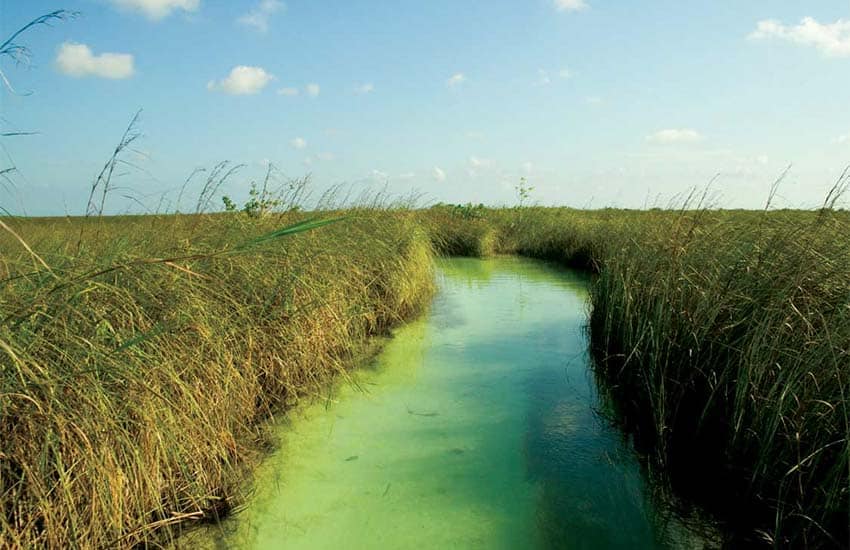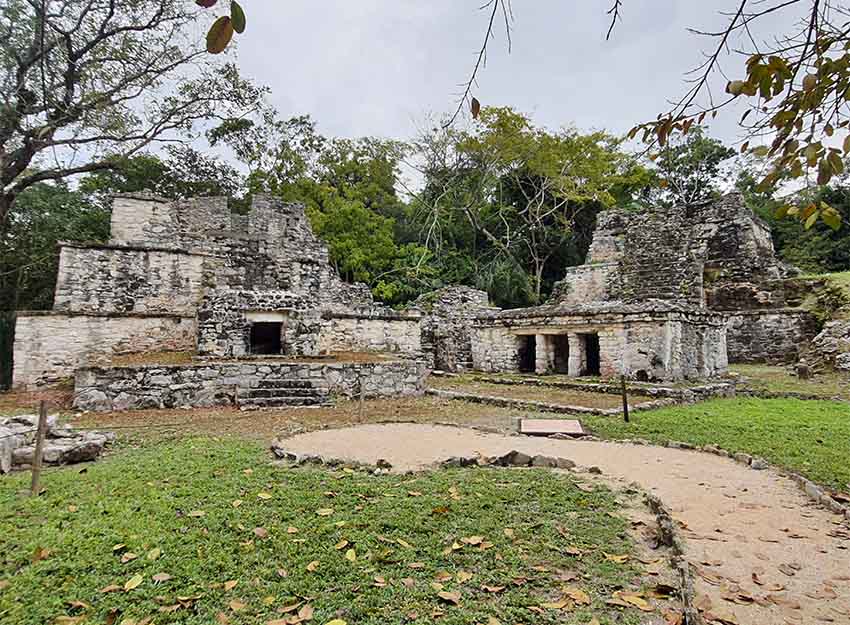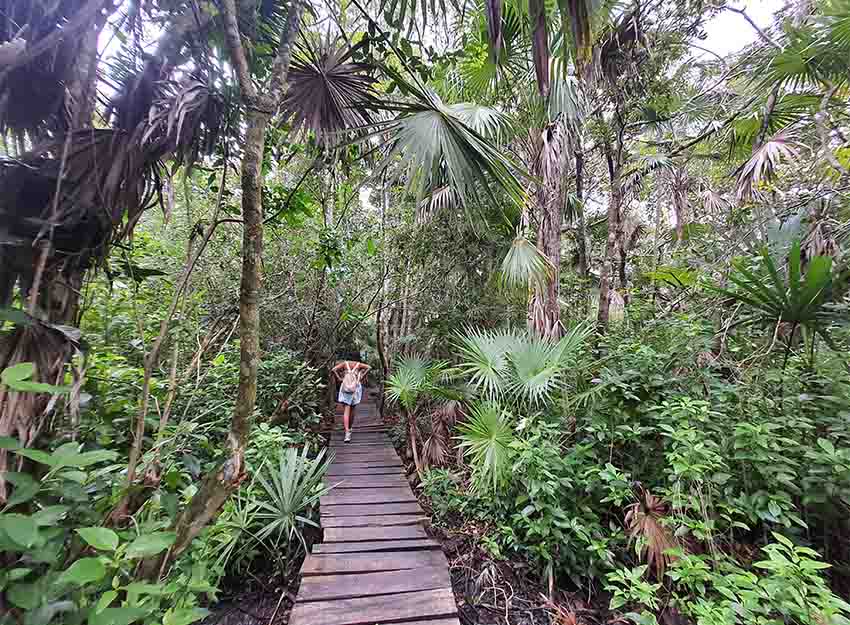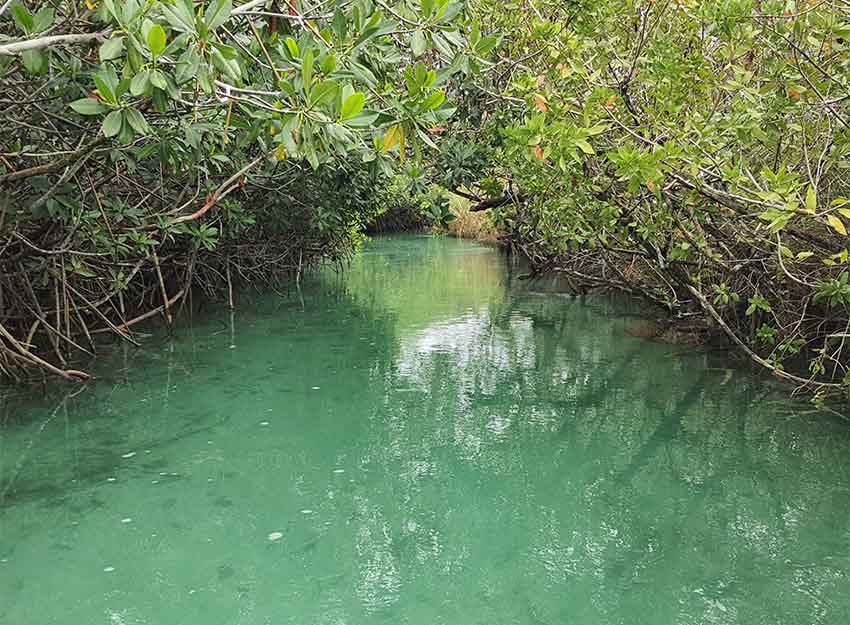Ancient Maya city of Muyil an overlooked jewel near Tulum
For a unique outing around Tulum, visit Muyil, featuring artifacts over two millennia old and breathtaking views inside a biosphere reserve.
Looking for a unique outing around Tulum? Visit the Muyil ruins, where you can also float along a nearby ancient canal with breathtaking surroundings.
Located around 25 kilometers from Tulum, Muyil is an ancient Maya city located in the Sian Ka’an biosphere reserve — a UNESCO heritage site. It has fewer visitors than the more famous archaeological sites in the Yucatán peninsula. We visited the site from Valladolid, less than two hours away.

The city’s original name is not known. It has been called Muyil and Chunyaxché since the colonial era, which are the names of two lagoons in the area. Muyil means “place of the rabbit,” and Chunyaxché means “ceiba log” in Mayan. Ceiba, also popularly known as the “tree of life,” was a sacred tree in ancient Maya culture. The biosphere reserve’s name, Sian Ka’an, means “entrance to the sky.”
Muyil is considered the most important among over 20 settlements within the biosphere reserve. Its history dates back over two millennia. According to the National Institute of Anthropology and History (INAH), the settlement was a small village around 300 B.C. and became an important city by about A.D. 250.
The city was involved in trade and also had connections with Maya cities like Cobá, Chichén Itzá, and Mayapán. Although Muyil was occupied when the Spanish arrived, its population declined quickly in the early 16th century. INAH found no evidence of the site’s occupation from the beginning of the Spanish conquest to the mid-19th century, when Maya rebels occupied the area from 1847 to the early 20th century during Yucatán’s Caste War.
The site has two sections, Muyil A and Muyil B, although only the former is open to visitors. There are fewer excavated buildings here than at many famous sites, so you can see them in a couple of hours. During our visit, most structures were cordoned off to visitors.

Once you enter the site, you’ll walk into the Entrance Plaza (a.k.a the Entrance Group), with a group of buildings, including several pyramidal structures with temples on them. This plaza shows some of the site’s oldest civic and religious architecture. Civic events and cult-based ceremonies are thought to have taken place here.
An interesting building in this section is a temple with traces of mural paintings. The plaza also has platforms that once had residences built with perishable materials.
Next, you can walk up to the site’s most important structure, the Castle, measuring around 17 meters tall with a beautiful crowning temple. Make time to check out the features of this impressive building from different sides. Two offerings with a large number of ornamental items, including those with jade and shells, were found on an altar here.
Archaeologists have also identified two building phases within this structure, as well as elements representing the architectural style of Petén, a region in Guatemala. It will remind you of the structures in Tikal (Guatemala), if you have visited them.
The circular tower-like structure on top is a unique architectural element. The flat stones on its exterior are believed to represent the protruding thorns of a ceiba tree.

Another notable building is the Pink Palace (or Temple 8). It is part of a complex of buildings, including temples, altars, and an oratory, separated by a low wall.
Archaeologists have identified two building phases here. It has remains of stucco and traces of paint. The Pink Palace is considered the center of the site’s community life.
After seeing the buildings, take the path through some beautiful jungle to a wooden watchtower. Along the way, there are signs highlighting interesting spots. The watchtower offers magnificent views across the greenery and lagoons. On a sunny day, you can see the beautiful blue shades of the water.

The climb is steep, so take good care. It may not suit all visitors.
If you’re up for some light adventure, you can take a boat from the nearby lagoon to enjoy the river float, in which you float along an ancient canal for around 30–45 minutes. The boat will take you to a spot near another ancient structure by the canals called Xlapak. You can check this out before getting into the clear and refreshing water.
The canals flow through mangroves and breathtaking scenery. The best part is that the current gently pushes you along, so you can relax amid the tranquil surroundings. Your boat captain will show you how to wear a life jacket in a unique way to get a somewhat seated position in the water.

We did the river float first and visited the ruins after since fewer visitors wait for boats early in the morning. You can also book a tour in advance.
If you have extra time after your trip to Muyil, visit the Tulum ruins, less than 45 minutes away.
Thilini Wijesinhe, a financial professional turned writer and entrepreneur, moved to Mexico in 2019 from Australia. She writes from Mérida, Yucatán. Her website can be found at https://momentsing.com/


No comments:
Post a Comment
Thank you. Comments are welcome.
ivan